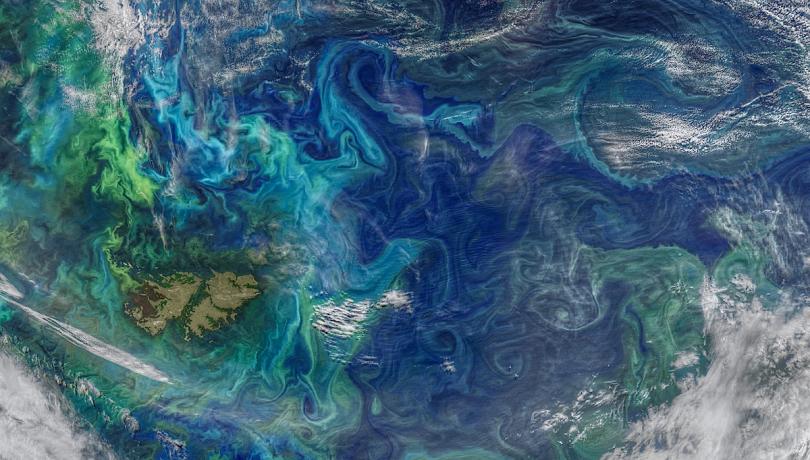Organic forms of this compound play a key role in marine planktonic networks and are an important part of the models used to predict the Earth's climate.

Researchers from the Institut de Ciències del Mar (ICM-CSIC), together with experts from thirteen other countries around the world, will promote, over the next four years, the study of the marine sulfur cycle, a key element for both marine and terrestrial life.
The main objective of the group, named DMS-PRO, is to delve into the biological and physicochemical transformations of a family of sulfur-containing substances that can have a significant impact on present and future climate. These substances include gases such as dimethylsulfide (DMS), which the ocean emits in large quantities into the atmosphere, and methanethiol.
"These gases are highly reactive, and once emitted into the atmosphere they oxidize rapidly and form microscopic particles that, in turn, can capture water vapor and contribute to cloud formation. Both natural marine aerosols and clouds reflect solar radiation, so that they cool the planet", explains ICM-CSIC researcher Martí Galí, one of the project's promoters.
The DMS-PRO will collect in a new database the available measurements of these substances, focusing on the production and consumption rates by marine microorganisms. In addition, it will create a series of standardized protocols for data acquisition and analysis that will serve to train new generations of experts in this field.
Also, the group will prioritize the design of informatics tools, making this field of research accessible to researchers in developing countries that have more limited access to oceanographic research infrastructures such as oceanographic vessels or the most sophisticated measuring devices.
The role of sulfur in the ocean
Sulfur organic forms play a key role in marine planktonic networks, where they drive large flows of matter and energy between microscopic algae, bacteria and their predators. In addition, these forms often act as chemical signals between microorganisms, allowing them to capture their prey or establish symbiotic or parasitic relationships.
The compound that is produced in the greatest quantity, and which stands out for the variety of functions attributed to it, is dimethylsulfoniopropionate (DMSP). Its decomposition initiates a cascade of transformations that generate several by-products. Among them are two gases that give sea air its characteristic odor: dimethylsulfide (DMS) and methanethiol (MeSH). At high concentrations, many people would identify these gases with the smell of seafood and rotten cabbage, respectively.
Despite their importance, there are currently no standardized protocols for determining the biological and physicochemical transformations of these substances, nor is there a freely accessible database containing the data acquired so far.
"This project will allow us to address this problem from an interdisciplinary perspective, which will enable us to obtain a global vision of the sulfur cycle. Our goal is that the products of the DMS-PRO working group will make it possible to better evaluate the role of these compounds in the oceanic and atmospheric system, both present and future", states Daniela del Valle, a researcher at the National Council for Scientific and Technical Research (CONICET) and the National Institute for Fisheries Research and Development (INIDEP) in Mar del Plata (Argentina), who is co-leading the project.
All in all, the project will contribute to the improvement of oceanic sulfur distribution and emission prediction models. These, in turn, are an important part of the models used to predict the Earth's climate under various global change scenarios and form the scientific basis for the reports of the Intergovernmental Panel on Climate Change (IPCC).